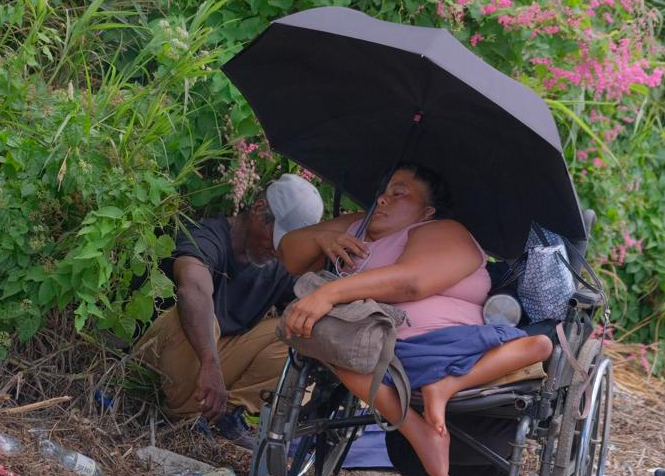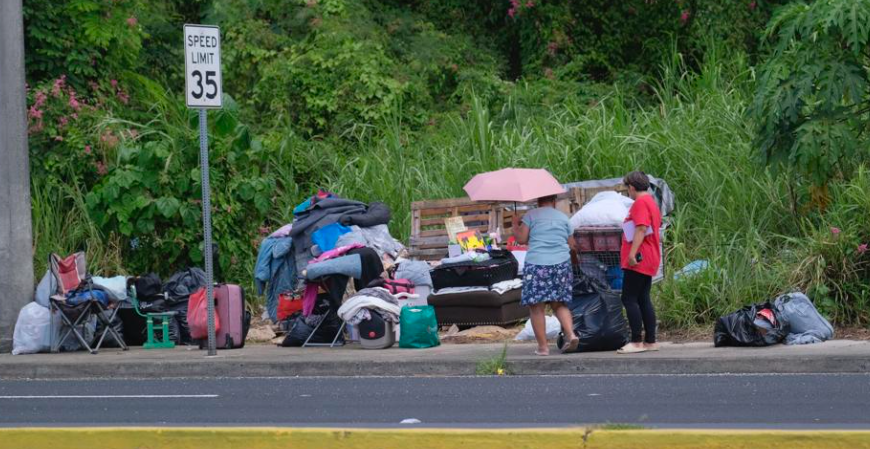HAGÅTÑA (The Guam Daily Post) — Attorney General Douglas Moylan’s call for a temporary staging area for homeless individuals has sparked further debate among Guam’s leadership, highlighting differing approaches to addressing the island’s homeless population amid concerns about economic impact and public safety.
In a statement released Monday, Moylan urged island leaders to take stronger action on homelessness, comparing Guam’s situation to other island economies in the region and suggesting the creation of a staging site at Adelup using military-grade tents. The proposed facility would serve as an evening shelter and daytime vetting center for homeless individuals, staffed by Cabinet officials.
“With dropping tourism numbers, and the devalued Asia exchange rate, panhandling and homeless encampments threatens Guam’s economic tourism engine and therefore all our quality of life,” Moylan stated. He pointed to the Commonwealth of the Northern Mariana Islands as an example of failing economic conditions, adding that “Hawaii does not tolerate homeless encampments.”
Moylan’s proposal drew an immediate response from the Office of the Governor. Adelup communications director Krystal Paco-San Agustin referenced the recent acquisition by the government of Guam of a building to provide overnight shelter for the homeless population and noted discussions about homeless services during this month’s Interagency Council for Coordinating Homelessness Programs.
Rob San Agustin, director of the Office of Homelessness and Poverty Prevention, in response to Moylan’s claims, provided details to The Guam Daily Post about the administration’s plans. “More than a staging site, in 2024, this administration purchased a warehouse that will be used as a bed at night and daytime services drop-in center,” San Agustin explained. “This has been a vision of the lieutenant governor, and we were able to execute part of that plan when the building was identified in 2023 and the acquisition finally closed in 2024.”
San Agustin added that the facility eventually will serve as the OHAPP center of operations, though design, construction and bidding processes need to be completed, as discussed at the latest Interagency Council meeting.
When questioned about historical challenges like those faced during Camp Omar in 1992, Moylan told the Post, “First, it should be our elected governor addressing our people and not a spokesperson. Take the spokesperson’s salary and help fix Guam’s growing poor and homeless problem.”
Moylan detailed his proposed approach, describing a multifaceted operation that would clear homeless encampments across all 19 villages. The plan would involve transferring individuals to Adelup with assistance from mayors, where military-grade tents would be erected to process homeless individuals through key Cabinet-level offices including the Guam Behavioral Health and Wellness Center, the Department of Public Health and Social Services and the Department of Labor, among others.
“Anyone who wants help will receive it. Otherwise, they will be forced to follow our laws,” Moylan said, adding, “Work for these poor is integral to success.” He emphasized that the site would provide evening meals, cleaning facilities and continental breakfast, while focusing on job placement during the day.
Moylan pointed to the March 2023 Micronesia Mall homeless encampment operation as an example, noting the collaboration between his office, Lt. Gov. Josh Tenorio and the Mayors’ Council of Guam. “The attack on the homeless encampments must be multifaceted, and the governor is the key to solving this and our other socioeconomic problems. Short-term and longer-term solutions exist,” Moylan stated.
Regarding Moylan’s suggestion to use closed schools as potential staging sites, Guam Department of Education Superintendent Kenneth Erik Swanson indicated such arrangements would be possible, but with conditions. “Use of closed schools by another GovGuam entity is possible, provided they fund and supervise the operation,” Swanson told the Post. “GDOE is not designed, funded, or equipped to conduct such an operation.” He noted that one campus in Sånta Rita-Sumai is currently available for lease.
Moylan’s proposal comes as Hawaii implements its own approaches to homelessness. He pointed to a recent report that indicates Hawaii’s homelessness coordinator, John Mizuno, has facilitated the return of 137 mainland-originated homeless individuals to their families since January 2024, projecting taxpayer savings of approximately $5 million in service fees.
Moylan criticized what he called the administration’s “excuse syndrome,” arguing that “leaders create models, whilst followers copy someone else’s. We need a governor and Cabinet team that can create a model that fixes our homeless problem and improves all our quality of life.”

Individuals who lived at the Harmon Loop homeless encampment before the police removed tents from the area, wait near the encampment on Tuesday, Jan. 21, 2025.

The Harmon Loop homeless encampment on Tuesday, Jan. 21, 2025 after the police removed tents from the area.











